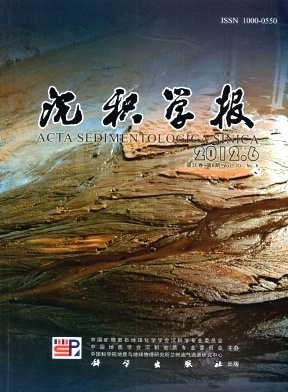Sedimentary Characteristics and Geological Implications of the Middle Permian Tempestite in Moyang Section, Luodian, South of Guizhou
- Publish Date: 2012-12-10
-
Key words:
- Middle Permian /
- tempestite /
- sedimentary sequence /
- Moyang, Guizhou /
Abstract: South Guizhou is located in YunnanGuizhouGuangxi basin, southwest of the Yangtze plate. This area is located in the shallow shelf during the most period of the Permian, dominated by carbonate platform depositional environments. The Moyang Section is just situated in the transitional zone between the carbonate platform and basin, which is an ideal region for preservation of storm deposits. The Maokou Formation of Middle Permian in Moyang Section, Luodian, South Guizhou is mainly composed of marine shelf carbonates. Tempestite occurs in the lower part of this formation, featured by the shell limestone, containing a little rubble with sedimentary structure of storm deposit. Biological shells are severe fragmented and grading is not obvious in the shell limestone. The storm sedimentary structures include bottom erosional surface, truncation, wave ripple bedding, graded bedding, and massive bedding. Storm deposits include bottom erosional surface A and four sedimentary units: B, C, D, E. The unit A, bottom erosional surface, indicates the action of storm flow on marine sediment; the unit B, shell limestone, represents the deposits of storm waves and storm eddy; the unit C, grading layer, records the process of gravitational differentiation or storm turbidity during period of storm decaying; the unit D, massive layer, is produced by rapid accumulation of suspending materials in the late stage of the storm; the top unit E, waves ripple bedding section, is deposited during the later period of the storm. Four successions of storm deposits can be distinguished, correspondent to the waterdepth and storm flow involved. Successions 1, 2 and 3 occur in the inner shelf that between the normal wave base and storm wave base, caused by the intensive proximalstorm. Succession 4 occurs in the outer shelf that below the storm wave base, which is the turbidity deposit brought by the distalstorm. The sedimentary characteristics, types and sequences of the Moyang storm deposit suggest that the preservation of the storm sedimentary sequence closely related to the sedimentary environment, providing a reference for understanding the evolution of the southern margin of the Yangtze carbonate platform.
| Citation: | Sedimentary Characteristics and Geological Implications of the Middle Permian Tempestite in Moyang Section, Luodian, South of Guizhou[J]. Acta Sedimentologica Sinica, 2012, 30(6): 1010-1020. |






 DownLoad:
DownLoad: